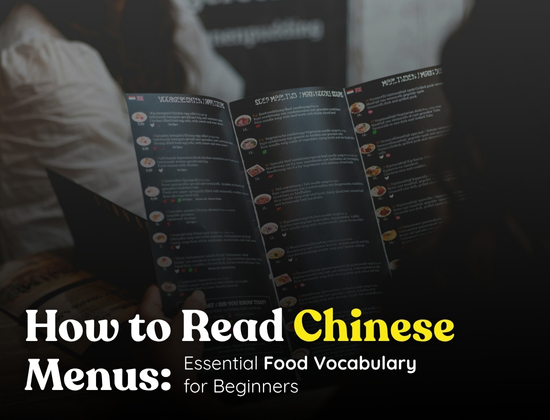
How to Read Chinese Menus: Essential Food Vocabulary for Beginners
.
Reading a Chinese menu can feel like decoding an ancient scroll of mystical characters, poetic names, and unfamiliar ingredients. But don’t worry! Whether you’re planning to visit China, order dim sum like a pro, or just impress your friends at a local Chinese restaurant, this beginner’s guide will help you crack the code.
Here’s how to stop guessing and start tasting!
Why Are Chinese Menus So Confusing?
Chinese cuisine is incredibly diverse, and so are its menus. From Sichuan spice to Cantonese sweetness, each region adds its flair to names, sauces, and preparation styles. Add in a few poetic phrases and a dozen ways to say “chicken,” and you’ve got the perfect recipe for a beginner’s brain freeze.
But with a little vocabulary and cultural context, you’ll soon spot the patterns and make delicious decisions with confidence.
Essential Chinese Food Vocabulary
Start with these must-know words that appear frequently on menus. These keywords are your first clues to what’s on your plate:
Proteins:
-
鸡 (jī) – Chicken
-
牛 (niú) – Beef
-
猪 (zhū) – Pork
-
鱼 (yú) – Fish
-
虾 (xiā) – Shrimp
-
豆腐 (dòufu) – Tofu
Cooking Methods:
-
炒 (chǎo) – Stir-fried
-
蒸 (zhēng) – Steamed
-
炸 (zhá) – Deep-fried
-
烤 (kǎo) – Roasted/Grilled
-
煮 (zhǔ) – Boiled
Flavors & Styles:
-
麻辣 (málà) – Numbing & Spicy (hello, Sichuan!)
-
甜酸 (tiánsūan) – Sweet and Sour
-
酱油 (jiàngyóu) – Soy Sauce-based
-
干锅 (gānguō) – Dry Pot
Popular Dishes:
-
宫保鸡丁 (gōng bǎo jī dīng) – Kung Pao Chicken
-
鱼香肉丝 (yú xiāng ròu sī) – Fish-Fragrant Shredded Pork
-
红烧牛肉 (hóng shāo niú ròu) – Braised Beef in Soy Sauce
-
小笼包 (xiǎo lóng bāo) – Soup Dumplings
Menu Hacking Tricks for Beginners
-
Look for radicals: Once you know the character for “meat” (肉), spotting it inside another word gives you a hint.
-
Match photos with characters: Many Chinese restaurants have image-heavy menus. Match characters to dish images to build recognition.
-
Don’t skip the rice: Characters like 米饭 (mǐfàn – white rice) or 炒饭 (chǎofàn – fried rice) can be comforting choices when everything else feels risky.
Bonus Cultural Nuggets
Chinese dishes are often named after:
-
Places (北京烤鸭 – Beijing Roast Duck)
-
People (麻婆豆腐 – Mapo Tofu)
-
Cooking pots (火锅 – Hot Pot)
So you’re not just ordering food you’re getting a slice of history!
Ordering Like a Local
You don’t have to master Mandarin to enjoy authentic Chinese food, but knowing a few words goes a long way. Start with:
-
我要这个 (wǒ yào zhè ge) – “I want this one.”
-
不要辣 (bú yào là) – “No spice, please.”
-
好吃 (hǎo chī) – “Delicious!”
Want to Learn More Than Just Menus?
At The Language Skool (TLS), we don’t just teach you how to say the words, we help you live the language! From real-life food tours to language immersion classes, our Chinese programs are designed to make learning deliciously fun.
Ready to read menus like a native? Join our Chinese course today and get a taste of fluency!












